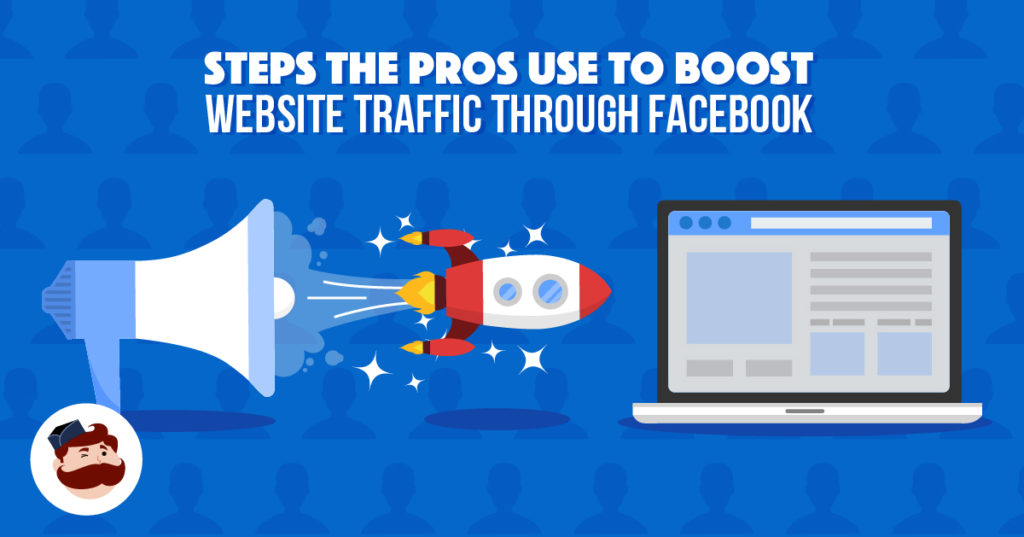the steps to effectively drive traffic to your website using Facebook Ads
the steps to effectively drive traffic to your website using Facebook Ads
Blog Article

Driving website traffic through Facebook Ads is a powerful way to increase visibility, attract potential customers, and enhance overall engagement. To do this effectively, it’s essential to understand Facebook’s advertising platform, set clear objectives, and leverage targeting tools to reach the right audience. Here are the steps to effectively drive traffic to your website using Facebook Ads: Slot gacor gampang menang
1. Set Clear Campaign Objectives
Before you start creating ads, define what you want to achieve with your Facebook Ads. Facebook Ads Manager allows you to choose from different campaign objectives. For driving website traffic, the most appropriate objective is usually "Traffic". This option optimizes your campaign to send as many people as possible to your website.
2. Know Your Audience
To ensure you're reaching the right people, define your target audience. Facebook offers robust targeting options based on:
Demographics: Age, gender, education, occupation, etc.
Location: Countries, cities, or specific areas.
Interests: People who engage with specific topics, pages, or products.
Behavior: Users based on their online behavior, such as purchasing patterns.
Custom Audiences: Upload your own email lists or retarget website visitors.
Lookalike Audiences: Facebook finds new people similar to your existing audience.
3. Create Engaging and Relevant Ad Creative
The visuals and messaging of your ad play a crucial role in catching the audience’s attention. To increase website traffic:
Use High-Quality Images and Videos: Ensure that the images are eye-catching, high-quality, and relevant to the product or service.
Craft Compelling Copy: Your ad copy should be concise, clear, and persuasive. Focus on a strong call-to-action (CTA) like "Learn More," "Shop Now," or "Get Started."
Use Carousel or Video Ads: These formats allow you to showcase multiple products or provide an engaging experience, encouraging users to click through to your website.
A/B Testing: Test different ad formats, headlines, CTAs, and images to find what resonates best with your audience.
4. Optimize Landing Pages
Once your audience clicks on your Facebook ad, they will be directed to a landing page. The landing page should:
Be mobile-friendly (since most Facebook users browse on mobile devices).
Load quickly to avoid bounce rates.
Have a clear and consistent message that matches the ad copy.
Include strong CTAs that guide users to the desired action, such as signing up for a newsletter or making a purchase.
5. Set Your Budget and Bidding Strategy
Facebook provides multiple ways to control your budget, either with a daily or lifetime budget. Decide how much you’re willing to spend and set a bid strategy that aligns with your goals:
Manual Bidding: Allows you to set a specific cost per click (CPC) or cost per impression (CPM).
Automatic Bidding: Facebook optimizes your budget for maximum clicks or conversions.
6. Monitor Ad Performance
Once your ads are live, continuously monitor their performance in the Ads Manager. Key metrics to focus on include:
Click-Through Rate (CTR): Shows the percentage of people who clicked on your ad after seeing it.
Cost Per Click (CPC): Measures how much you’re paying for each click.
Website Conversions: If your goal includes specific actions on your website (like purchases or sign-ups), tracking conversions is essential.
If you notice that an ad isn’t performing well, consider making adjustments to targeting, creatives, or budget.
7. Retarget Visitors with Custom Audiences
Use Facebook's retargeting feature to reconnect with people who have already interacted with your brand. This can be done through Custom Audiences based on:
People who have visited your website but didn’t convert.
People who engaged with your Facebook page or posts.
Visitors who added products to their cart but didn’t complete the purchase.
By retargeting these users, you have a higher chance of converting them into customers or repeat visitors.
8. Use Facebook Pixel
Installing the Facebook Pixel on your website is essential for tracking the performance of your ads and understanding user behavior. The Pixel helps:
Track conversions (e.g., purchases, sign-ups).
Create retargeting audiences.
Optimize ad delivery for users likely to take a specific action on your site.
Measure the effectiveness of your Facebook Ads in driving traffic and conversions.
9. Leverage Facebook Stories Ads
Facebook Stories are highly engaging and offer a great opportunity to drive traffic to your website. Stories are full-screen ads that appear between user stories and are particularly effective for grabbing attention.
10. Leverage Dynamic Ads
Dynamic Ads allow you to show personalized content to users based on their previous behavior. This is a powerful way to encourage traffic if you’re in the e-commerce space, as it automatically displays the right products to the right audience.
11. Run a Campaign for a Limited Time
Using urgency and scarcity in your ads can drive immediate traffic to your website. You can create time-limited offers or promotions that encourage users to click and act quickly.
Conclusion
Facebook Ads can be a highly effective way to drive traffic to your website, but success requires careful planning and execution. By setting clear objectives, understanding your target audience, crafting compelling creatives, and optimizing campaigns based on performance, you can significantly boost your website traffic. Additionally, leveraging tools like the Facebook Pixel, retargeting options, and testing different ad formats will ensure that your ads are as efficient and effective as possible.